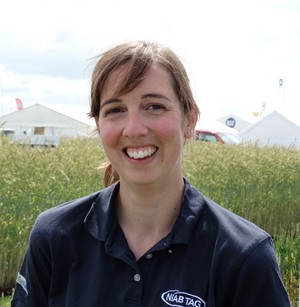
Growers should not be alarmed by active yellow rust in early sown wheat advises a leading cereal pathologist.
The mild autumn, coupled with a large spore load from this summer, has resulted in early symptoms of the disease, even on resistant varieties. However, Dr Sarah Holdgate, project manager of the HGCA-funded UK Cereal Pathogen Virulence Survey (UKCPVS), says that growers can expect to see yellow rust at this stage on some varieties rated at 8 or 9 on the HGCA Recommended List. 
“Even the most resistant varieties can sometimes have yellow rust infection in the autumn, but adult plant resistance means that the plant will outgrow the disease at a later growth stage,” says Dr Holdgate. “UKCPVS research, on samples of yellow rust collected in 2013, has shown that some varieties, such as KWS Cashel, Icon and Zulu, have a degree of susceptibility as seedlings to one or more of the isolates tested. All went on to have little or no disease when it came to the crucial adult plant stages.”
Dr Holdgate does warn growers however that on susceptible varieties yellow rust seen now could carry through to next spring. "Very cold winter conditions can slow the disease but unless the infected leaf is actually killed, the fungus will survive through to the spring."
Bill Clark, Commercial Technical Director at NIAB TAG confirms this and says:“We’ve had early reports of yellow rust appearing in crops, similar to 2013. This is to be expected given the widespread rust in 2014, which was predominantly the Warrior race, and the very mild conditions in September and October.”
Mr Clark advises early infections such as this can be difficult to control if they become established on susceptible varieties during the winter months. Once plants are infected they will usually carry infection through the winter, producing an early spring epidemic. “However, spraying against yellow rust in the autumn is rarely needed except in exceptional circumstances – normally the rust can be tackled in the early spring,” he says.
As part of the monitoring programme Dr Holdgate is asking growers with substantial amounts of yellow rust in their crops to send samples of the infected leaves to the UKCPVS at NIAB Cambridge.
"In the past we’ve had an excellent response from the arable community with samples coming in as early as 18th November in 2013. Results from the 2013/14 tests will be published in early 2015, with a summary at our annual Stakeholders Meeting on 5th March,” finishes Dr Holdgate.
UKCPVS
The UK Cereal Pathogen Virulence Survey is funded by Fera and HGCA, and managed by NIAB. It has been monitoring cereal rusts and mildews in the UK for more than 40 years, detecting and warning industry and growers of new races of disease emerging on resistant varieties. The UKCPVS:
- Monitors changes in virulence of UK cereal pathogen populations;
- Maintains and improves variety disease resistance allowing growers to prioritise other characteristics such as yield and quality when choosing a variety;
- Enables breeders and variety testing authorities to screen out potential new varieties and breeding lines that are too susceptible to new races of disease before they get to the HGCA Recommended List stage or onto farm;
- Provides information and warnings to assist disease risk management on farm; underpinning HGCA RL disease resistance ratings and assessing the threat that each new race poses to the full range of commercial varieties.
